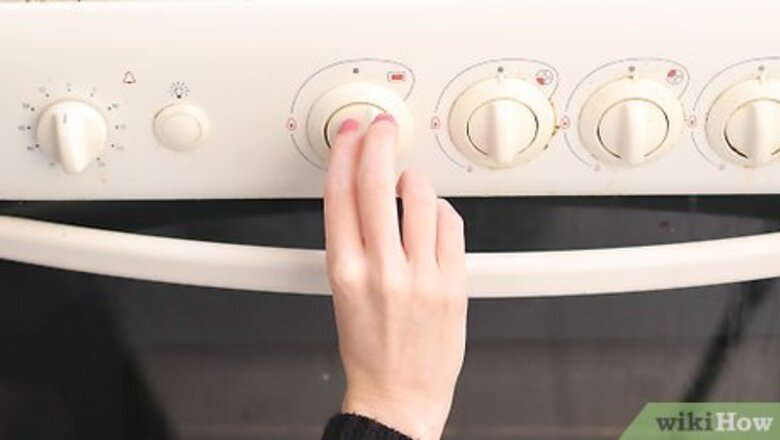
views
Vegetables
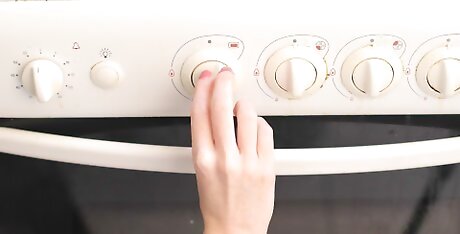
Preheat the oven to 200 °F (93 °C). Begin preheating the oven before prepping the food so it’s ready when your prep work is done. On a lower heat like 200 °F (93 °C), the oven should be ready in 5-10 minutes.
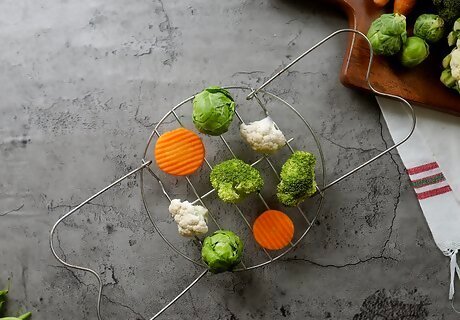
Arrange the vegetables on a grate or steaming pan. If you have a steaming pan like you’d use on a stovetop, then use this. Otherwise, any kind of metal cooking grate will work as well. Lay the vegetables out on the grate. It’s okay if they touch each other. Chop up large vegetables like peppers and onions. Make sure the pieces aren't small enough to fall through the grate. Smaller vegetables like baby carrots or Brussels sprouts don't have to be chopped, but you can if you prefer to. You don't have to peel vegetables to steam them. Unless you don't like skin on your vegetables, leave the skin on, because it usually contains some essential nutrients. If you chop the vegetables, make each piece the same size so they cook uniformly.
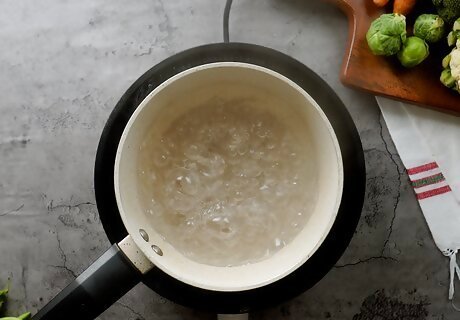
Bring water to a boil on the stovetop. This makes the water steam up much faster when you place it in the oven. Pour water into a teapot or regular cooking pot and place it on the stovetop over a high flame. Heat the water until it boils.
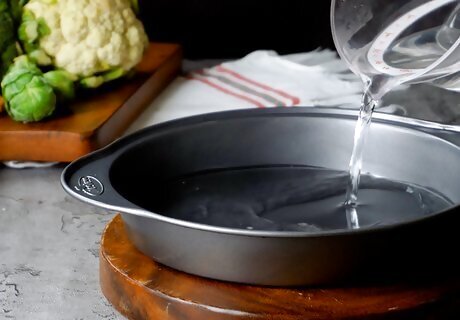
Pour ⁄2 in (1.3 cm) of water into an oven-safe pot or pan. When the water boils, remove it from the flame. Cover the bottom of a pot, pan, or skillet with ⁄2 in (1.3 cm) of boiling water. Pour carefully so the water doesn’t splash up and burn you. Make sure the pan is oven-safe. Don’t use anything with rubber or plastic parts.
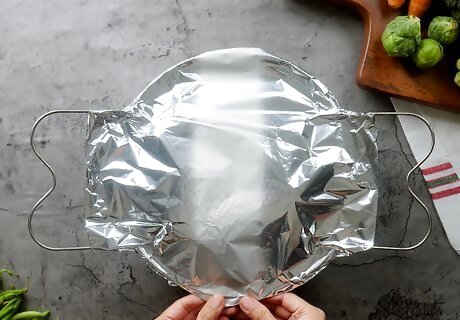
Place the grate over the pot and cover the vegetables with aluminum foil. Select a grate that's slightly larger than the pot. Make sure the vegetables are directly over the water. Then, take a sheet of aluminum foil and wrap it over the top of the pot, covering the vegetables. Make sure there are no openings for the steam to escape through. If the grate is too small and falls into the pot, then try using a smaller pot that the grate can rest on.
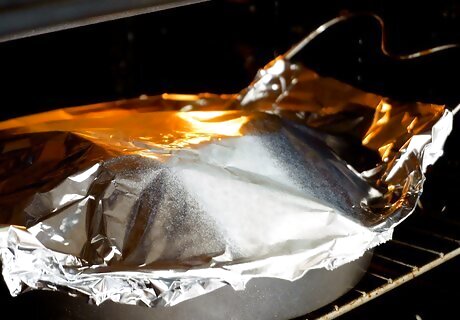
Put the pot in the oven. Lift up the whole package and place it in the oven. Use oven mitts to avoid burns from the hot oven. Then close the oven and let the vegetables steam. You can use any oven rack for this task.
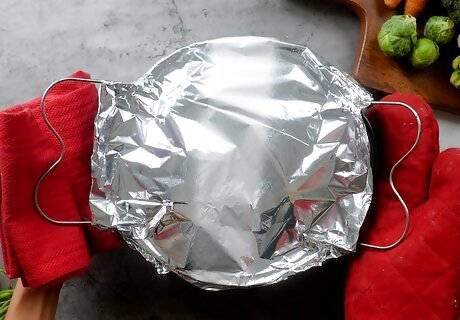
Steam the vegetables for 3-8 minutes, depending on the type. Different vegetables require a different steaming time. In general, steaming them for less time keeps them firm and crunchy. Steaming them longer makes them more tender. Adjust the time based on your preferences. Cauliflower, broccoli, asparagus, and spinach need 5-6 minutes. Carrots need 6-8 minutes and brussels sprouts need 8-10. Beans and peas only need 3-5 minutes. Adjust your steaming time based on what you’re cooking.
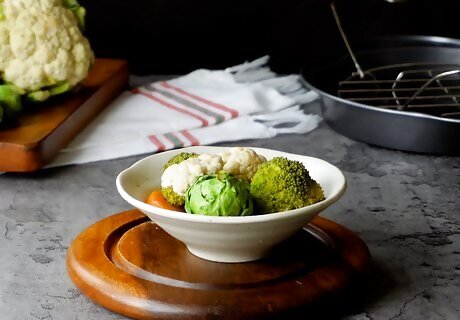
Remove the pot and let the vegetables cool before serving them. Put your oven mitts back on and remove the pot. Carefully remove the foil and pour the vegetables onto a plate. Let them cool for 3-5 minutes before serving them. Keep your face away from the pot when you take the foil off. Steam will come out and could burn you. Steamed vegetables make an excellent side dish. Sprinkle some salt, pepper, or garlic powder on for extra flavor.
Bread
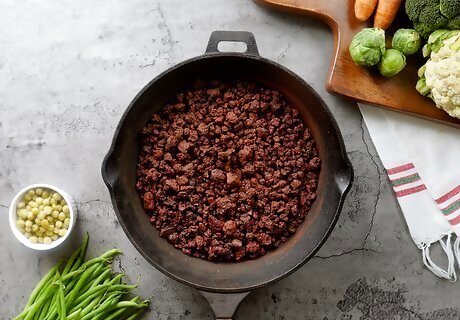
Fill a cast iron skillet with lava rocks. Lava rocks absorb heat and steam water quickly. Start by washing off the lava rocks to remove any dirt. Then cover the bottom of a cast iron skillet with the rocks. Lava rocks are available at hardware and grilling stores. You can also order them online.
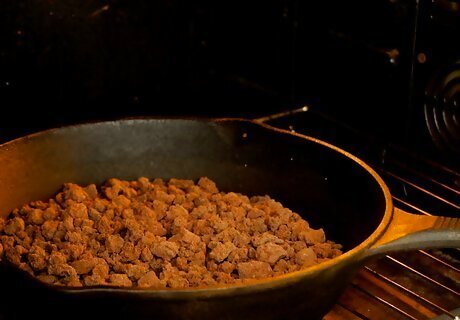
Place the skillet in the oven. Let the rocks preheat along with the oven, so place them inside before turning the oven on. Place the skillet on the bottom of the oven so when you add the water, the steam rises throughout the oven. Make sure the skillet is oven-safe and doesn’t have any plastic or rubber parts that could melt.
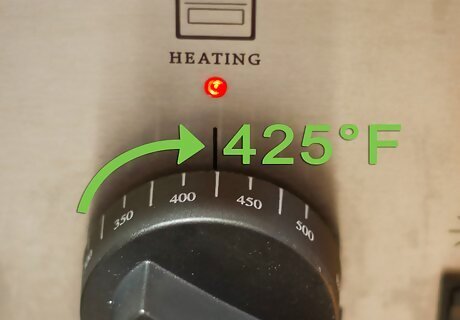
Preheat the oven to 425 °F (218 °C). Bread usually needs a higher temperature to bake than other foods. Set your oven to 425 °F (218 °C) and allow it to heat up. Do your other prep work while waiting. For a high temperature like this, the oven may take 20 minutes to preheat. The baking temperature may change depending on the type of bread you’re making. Consult your recipe to confirm the temperature.
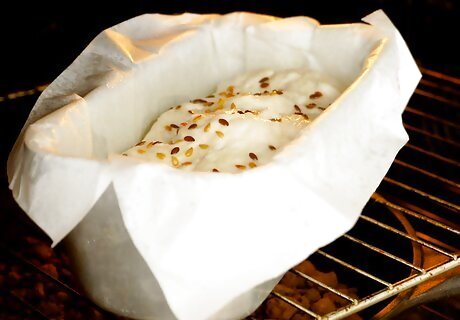
Insert the loaves of dough when the oven preheats. Take the dough for the bread you’re making and slide it into the oven. Wear oven mitts to avoid any burns. Place the dough on the row above the lava rocks so the steam rises into it. This technique can be used with any type of bread, so make the dough that you prefer. Don’t close the oven yet. Wait until you introduce the steam.
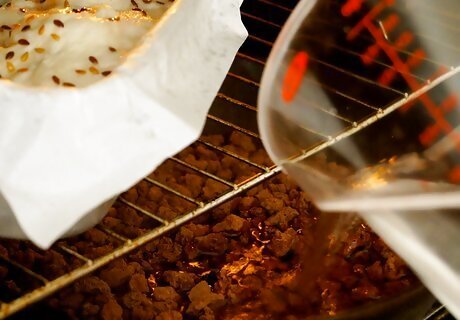
Pour 1 cup (240 ml) of hot water over the lava rocks. Very carefully hold the cup above the lava rocks, then pour it in. The steam will rise right away, so make sure you’re wearing an oven mitt. As soon as you pour the water, close the oven to trap the steam. Be very careful during this step because rising steam could burn you. Keep your face far away from the pan and wear an oven mitt. Wearing long sleeves is a good idea as well, in case hot water splashes onto you.
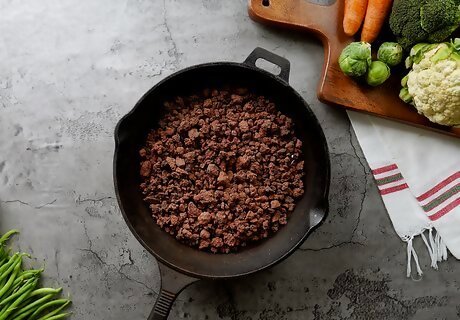
Remove the lava rocks after 20 minutes. This allows enough time for the steam to rise and penetrate the dough. Open the oven and remove the skillet and lava rocks. Remember to wear a thick oven mitt. Place the skillet on the stovetop to cool off. Remember that the skillet is extremely hot. Don’t touch it or the lava rocks until they cool down.
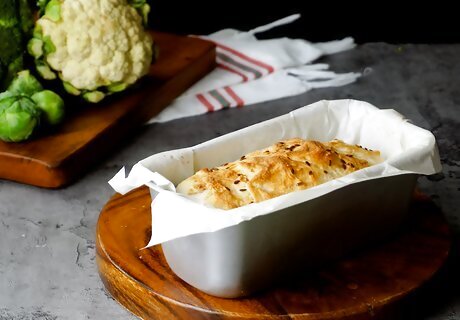
Continue baking the bread normally. Once you remove the lava rocks, leave the bread in until it’s finished baking. The baking time depends on the type of bread, so follow the directions on your recipe. When the bread is finished, remove it and let it cool. Normal bread baking time is 25-45 minutes. This means that after removing the rocks, your bread may need anywhere from 5-25 minutes of additional baking time.
Fish
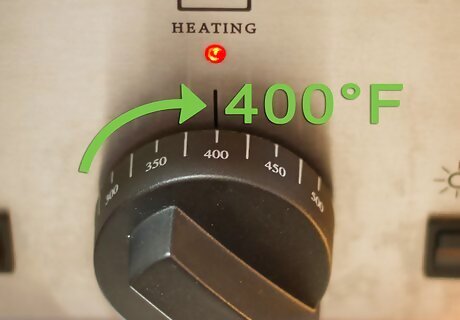
Preheat the oven to 400 °F (204 °C). For a high temperature like this, the oven will take 15-20 minutes to preheat. Set the oven first, and carry out the rest of the prep work while you wait for it to heat up.
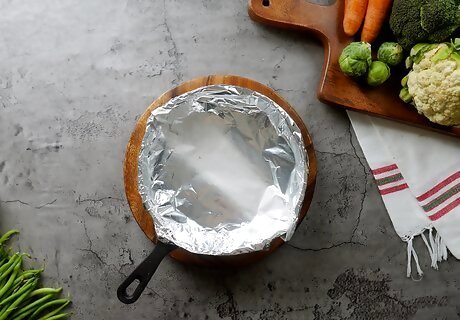
Line an oven-safe skillet with aluminum foil. Rip off a sheet of aluminum foil. Make sure it's large enough to wrap the whole piece of fish and allow some extra room for air inside. Lay the foil onto a skillet. This is the simplest technique to steam fish in the oven, but there are some others. You can also place the fish on a grate over water, the same way you'd steam vegetables.
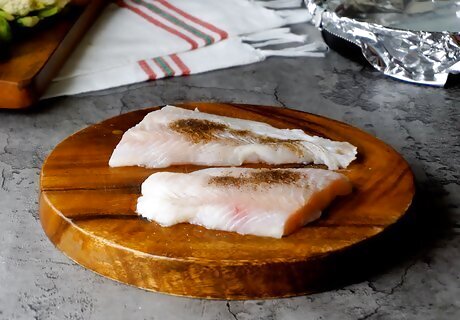
Season the piece of fish however you like to. Lemon, salt and pepper are the most common seasonings for fish. You can also add thyme, oregano, chili powder, cumin, or other spices that you like. You can also add vegetables to the skillet for more flavor. For example, line the foil with chopped onions before adding the fish.
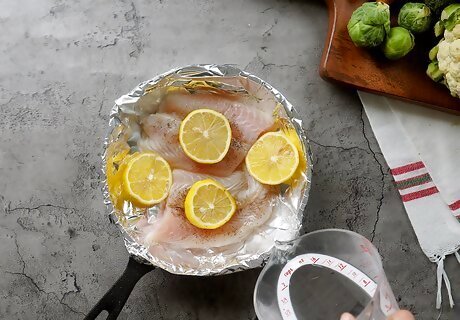
Add 2 tbsp (30 ml) of water to the fish. This creates the steam that will cook the fish. Measure out the water and pour it over the fish. Don't use too much water, or the fish will be soggy. Just add enough to create steam and slowly cook the fish.
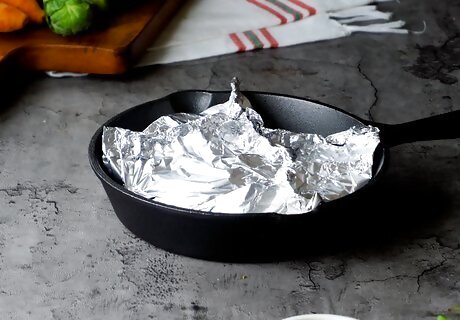
Wrap the foil around the fish to create a tent. Fold the foil flaps up and roll them together above the fish. Make sure there is empty space inside the wrapping, like a tent. Leave a small, 2 in (5.1 cm) opening at one end for the steam to escape. Besides this one opening, make sure the rest of the seal is tight. Don't let steam escape through any other cracks.
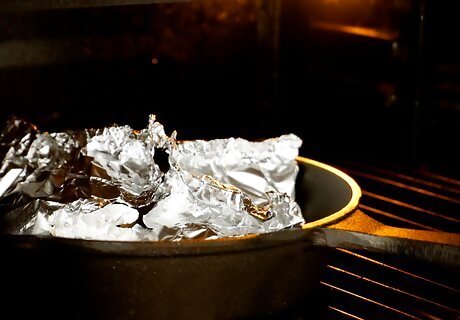
Place the skillet in the oven and cook the fish for 15-20 minutes. This is an average time for average-sized fish fillets. If you're cooking a whole fish, then allow 30-40 minutes for the fish to cook all the way through. You can use any rack in the oven for this meal. If you're not sure how to judge when a fish is ready, use a thermometer. Wait until the fish's internal temperature is 145 °F (63 °C) to indicate that it's finished.
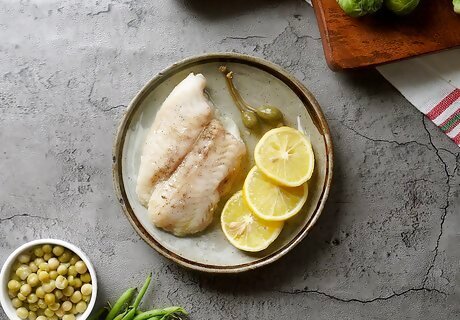
Remove the fish and serve it after it cools. Use a thick oven mitt to take the skillet out because it will be very hot. Place the skillet on the stove top and let it cool for a few minutes. Then, carefully unwrap the foil tent and transfer the fish onto a plate to serve it. You can add some more seasonings after the fish is cooked like salt, pepper, and a squeeze of lemon juice. Also steam some vegetables for a full, steamed meal.
















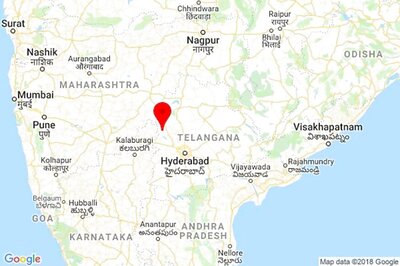



Comments
0 comment